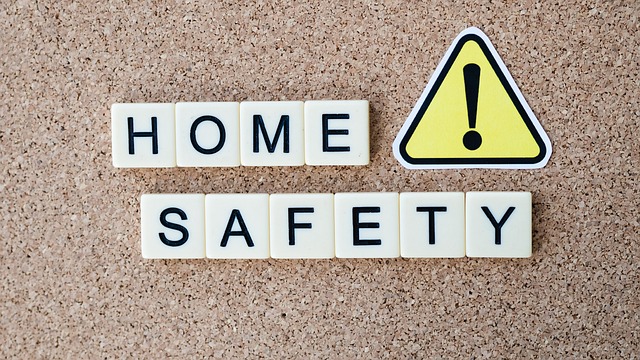Before storms strike, it's crucial for homeowners to take proactive steps to ensure their homes and families are safe. This includes securing outdoor items, installing permanent storm shutters or plywood over windows, and considering a professional lightning protection system to prevent fires and surges from lightning strikes. Regular maintenance of this system by a certified electrician is vital. Additionally, having a well-prepared emergency kit, an up-to-date home safety plan tailored to the type of storm, and a clear evacuation strategy are essential for swift action when warnings are issued. Homeowners should also protect important documents and consider surge protectors for electronic devices. Regular safety drills will enhance readiness for any storm event. By adhering to these measures, homeowners can significantly increase their homes' safety and structural integrity during severe weather conditions.
When the skies darken and the winds howl, safeguarding your home becomes paramount. This article serves as a comprehensive guide to enhancing your home’s resilience against the fury of storms. We delve into recognizing storm patterns and risks for proactive home safety, providing an essential checklist for storm-proofing your dwelling. From reinforcing structures against high winds to safeguarding against flooding and lightning, learn the steps to secure your property. Additionally, we outline emergency preparedness plans tailored for families, ensuring everyone knows how to stay safe during a storm. Expert insights on storm proofing and damage mitigation are also shared, offering practical solutions to weather any tempest. Prepare today to protect your home tomorrow.
- Understanding Storm Patterns and Risks for Proactive Home Safety
- The Essentials of Storm-Proofing Your Home: A Checklist
- Securing Your Property Against High Winds, Flooding, and Lightning
- Emergency Preparedness: Creating a Storm Safety Plan for Your Family
- Professional Insights: Expert Tips on Storm Proofing and Damage Mitigation
Understanding Storm Patterns and Risks for Proactive Home Safety

When preparing your home for the safety during a storm, understanding local storm patterns is crucial. Homeowners should monitor weather forecasts and historical data to anticipate severe weather events, ensuring they have ample time to secure their property. This proactive approach can mitigate damage from high winds, flying debris, and heavy rainfall that typically accompany such storms. Additionally, identifying the specific types of storms common to your area, whether they be hurricanes, tornadoes, or thunderstorms, allows for tailored preparations, such as reinforcing windows, trimming trees, and clearing gutters. By staying informed and prepared, homeowners can significantly reduce the risks associated with these powerful weather events and safeguard their homes against potential damage. It’s always prudent to adhere to local advisories and follow expert recommendations for stormproofing your residence.
The Essentials of Storm-Proofing Your Home: A Checklist

Prior to the onset of storm season, it is critical to prepare your home to withstand potential high winds, heavy rains, and flying debris. Begin by inspecting all windows and doors for any potential weaknesses; consider installing impact-resistant shutters or storm panels as an additional layer of protection. Ensure that trees and branches around your property are trimmed to prevent them from toppling onto your home during a storm. Additionally, secure loose items in your yard, such as patio furniture, bicycles, or tools, which can become projectiles in high winds.
Storm-proofing your home also involves an overview of your safety plan and emergency supplies. Create a disaster kit with essentials like water, non-perishable food, batteries, a first-aid kit, medications, and important documents. Know the safest spots within your home to take cover during different types of storms. If advised by local authorities or if you feel unsafe, seek shelter in a community safe room or a neighbor’s home that is better equipped to handle severe weather conditions. Always stay informed through NOAA weather radio or reliable news sources for real-time updates and advisories.
Securing Your Property Against High Winds, Flooding, and Lightning

During high wind events associated with storms, securing your property is paramount for maintaining its integrity and protecting against potential damage. Homeowners should prioritize anchoring loose items such as patio furniture, trampolines, and lightweight structures that can become projectiles in strong winds. Retractable awnings and outdoor signs should be closed or brought indoors to prevent them from being lifted by the gusts. Ensuring that all doors and windows are tightly sealed with appropriate weather stripping can also help minimize wind entry, thus reducing pressure differentials that might otherwise lead to structural breaches.
In areas prone to flooding, proactive measures should be taken to safeguard your home against the incursion of water. Elevating electrical components above flood level, installing backflow valves in drains, and waterproofing basements are essential steps. Items of value should be moved to higher, dry areas, and sandbags can be strategically placed to deter water entry. Additionally, homeowners should consider purchasing comprehensive insurance policies that cover flood damage, as this is often not included in standard homeowner’s insurance.
When lightning strikes close to your home during a storm, taking immediate action is crucial for the safety of your property and its inhabitants. Lightning arresters installed on roofs can provide a path of least resistance to ground for any direct strikes, significantly reducing the risk of fire. It is also wise to avoid using landline phones, computers, or any electrical appliances that could potentially trigger a surge. Staying off the water and away from windows can protect you from flying debris should the power strike nearby. In the event of an imminent lightning strike, the best course of action is to take shelter in a safe, enclosed space and wait until the storm has passed.
Securing your property against high winds, flooding, and lightning involves both preventative measures and immediate actions during a storm. Home safety is not just about minimizing damage but also about protecting lives. By preparing your home with appropriate shields like lightning arresters and taking steps to mitigate flood risks, you can rest easier knowing that you have taken the necessary precautions to safeguard your property from the ravages of storms.
Emergency Preparedness: Creating a Storm Safety Plan for Your Family

When a storm approaches, having a well-defined storm safety plan is crucial for ensuring the protection of your family and property. This plan should be tailored to address the unique challenges posed by the type of storm you are facing, whether it’s a hurricane, tornado, or thunderstorm. Begin by assessing your home’s vulnerability to wind, flooding, and flying debris. Identify the safest areas within your home during different types of storms; for example, an interior room on the lowest floor for floods, and the smallest, inner room without windows for high winds. Ensure that all family members are familiar with these locations and know how to respond when a storm warning is issued.
In addition to identifying safe spaces, your storm safety plan should include emergency kits equipped with essential supplies such as water, non-perishable food, first aid supplies, batteries, and a battery-powered radio or flashlights. Regularly check these kits to ensure they are fully stocked and that their contents are up to date. It’s also wise to have a plan for where to go if you need to evacuate your home, including predetermined routes and shelters. Keep important documents, such as identification, insurance policies, and medical records, in a waterproof and accessible container. Regular drills can help your family stay calm and react swiftly when a storm strikes, minimizing the risks to everyone’s safety.
Professional Insights: Expert Tips on Storm Proofing and Damage Mitigation

When bracing your home for the unpredictable forces of a storm, prioritizing robust storm proofing measures is paramount for home safety. Experts recommend securing loose items outdoors that could become projectiles in high winds. Items such as patio furniture, garden tools, and trash cans should be anchored or stored indoors well before the storm hits. Additionally, reinforcing your windows with permanent storm shutters or plywood can significantly reduce the risk of wind damage. These barriers should be installed correctly and ahead of time to ensure they are effective when strong winds and flying debris threaten your home.
Investing in a robust lightning protection system is another critical aspect of storm proofing, as lightning strikes can cause devastating fires and electrical surges. This system includes grounding rods and conductive pathways that safely channel the immense electrical charge away from your home, minimizing the potential for damage. Furthermore, regular inspection and maintenance of this system by a certified electrician are essential to ensure its functionality during severe weather events. Homeowners should also consider a surge protector for their electronic devices to safeguard against power surges that can occur simultaneously with lightning strikes. By implementing these expert-recommended tips on storm proofing and damage mitigation, homeowners can significantly enhance the safety and integrity of their homes during storms.
When bracing for the unpredictable fury of storms, prioritizing home safety through proactive measures is paramount. This article has outlined a comprehensive approach to storm-proofing your residence, from understanding regional weather patterns to implementing expert tips on securing your property and creating an effective emergency plan. With the provided checklist and professional insights, you are now equipped to safeguard your home against high winds, flooding, and lightning, ensuring the well-being of your family and peace of mind during adverse conditions. Remember, staying informed and prepared can significantly reduce the impact of storms on your home and life.
